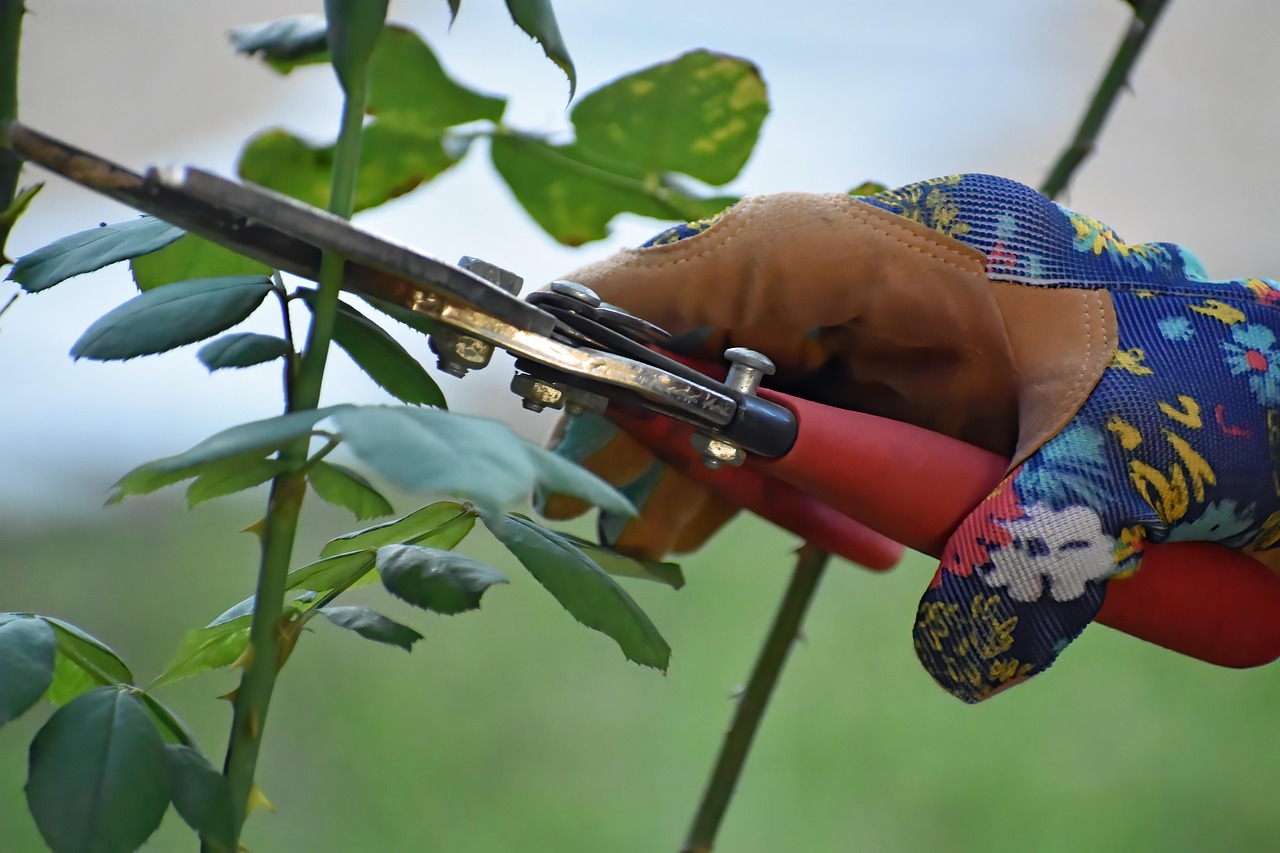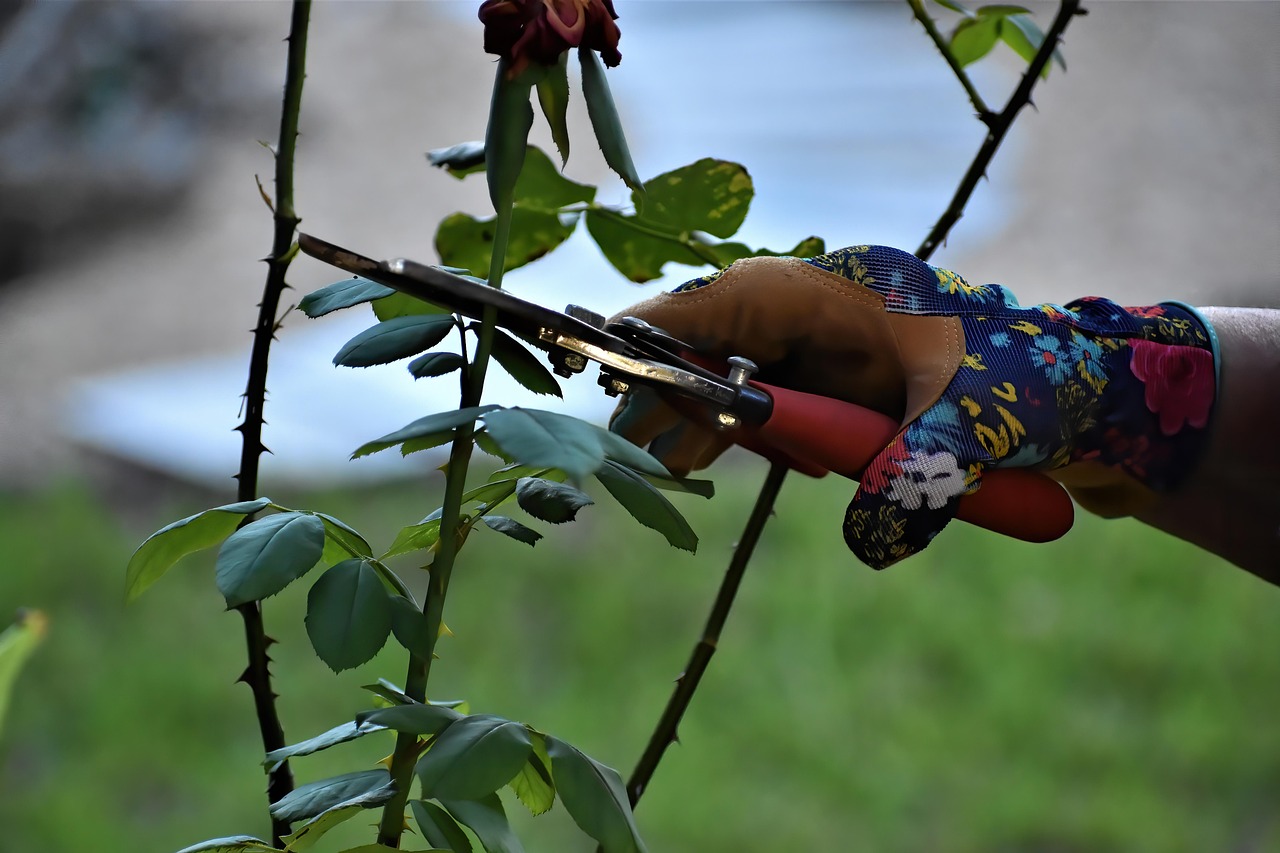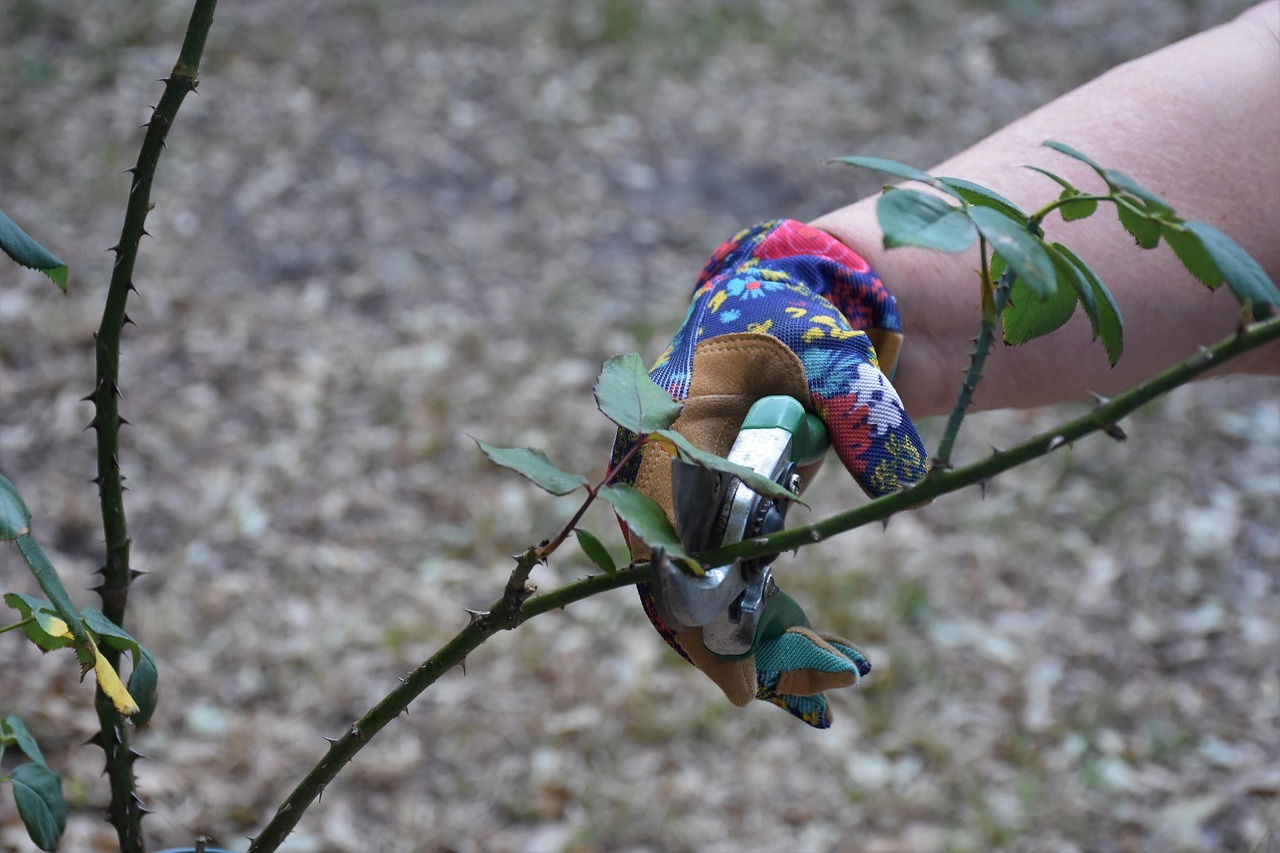Pruning roses is essential for promoting healthy growth and vibrant blooms in the spring. By cutting back old and dead wood, you encourage new growth and improve air circulation, leading to stronger plants and more beautiful flowers.
Roses are among the most beloved flowers in gardens worldwide. They come in various types, colors, and fragrances, making them a favorite choice for many gardeners. To maintain their beauty and health, proper care and maintenance are crucial. One of the most important tasks in rose care is pruning. Pruning helps shape the plant, remove diseased or damaged wood, and stimulate new growth. This section will explore the importance of pruning, the best times to prune roses, and the tools you need for effective pruning.

The Importance of Pruning Roses
Pruning roses is not just about aesthetics; it plays a vital role in the overall health of the plant. Here are some key reasons why pruning is essential:
- Encourages New Growth: Cutting back old wood encourages the plant to produce new stems, which will lead to more flowers.
- Improves Air Circulation: Removing excess foliage and dead wood improves airflow around the plant, reducing the risk of disease.
- Shapes the Plant: Pruning helps maintain a desirable shape for your roses, creating a more balanced and attractive appearance.
- Enhances Bloom Quality: Proper pruning can enhance the size and quality of blooms, resulting in more spectacular flowers.
Understanding how and when to prune roses can make a significant difference in their performance. It is important to know that different types of roses may require different pruning techniques. Some varieties thrive with heavy pruning, while others may need only light trimming. The time of year also greatly affects pruning practices.
When to Prune Roses
The best time to prune roses generally depends on the climate and specific rose variety. However, most roses should be pruned when they are still dormant, typically in late winter or early spring before new growth begins. In warmer climates, this might be as early as February, while in colder regions, it may be delayed until April. Here is a simple table outlining the ideal pruning times based on climate:

| Climate Zone | Optimal Pruning Time |
|---|---|
| Warm Climates | Late February to Early March |
| Mild Climates | March |
| Cold Climates | April |
Pruning at the right time ensures that you avoid damaging new growth while allowing the plant to recover and thrive. Additionally, observing the weather is essential; aim to prune when there is no risk of frost. This will protect your newly cut stems from cold damage.
Essential Tools for Pruning Roses
Having the right tools makes all the difference when it comes to pruning roses effectively. Below are some essential tools that every rose gardener should have:
- Pruning Shears: A good pair of sharp, bypass pruning shears is necessary for clean cuts.
- Loppers: For thicker branches, loppers provide extra leverage and cutting power.
- Saw: A small pruning saw may be needed for larger branches that cannot be cut with shears or loppers.
- Gardening Gloves: Protect your hands from thorns and cuts with sturdy gloves.
- Disinfectant: Keep your tools clean by using a disinfectant solution to prevent spreading diseases between plants.
Using the correct tools not only makes the job easier but also ensures that your cuts are clean. Clean cuts help the plant heal faster and reduce the risk of disease entering through open wounds.

In summary, pruning roses is a critical practice for anyone looking to enjoy beautiful blooms in their garden. Understanding its importance, knowing when to prune, and having the right tools will set you on the path to success. As we proceed further into this guide, we will delve into specific pruning techniques tailored for various rose types to ensure you achieve those spectacular spring blooms.
Understanding Different Rose Varieties
Before diving into specific pruning techniques, it is essential to understand the different types of roses. Each variety has unique characteristics that influence how and when they should be pruned. Here’s an overview of some common rose types:
- Hybrid Tea Roses: These are known for their single, large blooms on long stems. They typically require moderate pruning.
- Floribunda Roses: Floribundas produce clusters of flowers and may need lighter pruning to maintain their shape.
- Grandiflora Roses: A cross between hybrid tea and floribunda, these roses benefit from a pruning style similar to that of hybrid teas.
- Climbing Roses: These roses need careful pruning to encourage upward growth along supports. Pruning should focus on removing dead or weak stems.
- David Austin Roses: Known for their old-fashioned blooms, they require moderate pruning, focusing on shaping and removing old wood.
Recognizing the characteristics of your roses will help you determine the best pruning approach. The next step is to learn the proper techniques for each type.

Pruning Techniques for Different Rose Varieties
Each rose type demands a specific technique to maximize its blooming potential. Below are general guidelines for pruning various rose types:
Hybrid Tea Roses
For hybrid tea roses, follow these steps:
- Start by removing any dead or diseased wood.
- Cut back healthy canes to about one-third of their height, making cuts just above outward-facing buds.
- Maintain an open center to promote air circulation.
Floribunda Roses
Floribunda roses generally require less intensive pruning:
- Remove any dead or weak stems.
- Trim back the remaining canes to about half their height, focusing on maintaining a bushy appearance.
- Encourage new growth by cutting above outward-facing buds.
Grandiflora Roses
Grandiflora roses can be pruned similarly to hybrid teas:
- Eliminate dead wood and any weak stems.
- Cut canes back by one-third to one-half of their height.
- Aim for a balanced shape by ensuring an open center.
Climbing Roses
Climbing roses require a different approach:
- Focus on removing any old, dead, or weak canes.
- Prune side shoots back to about two or three buds to encourage flowering along the stems.
- Train long canes horizontally along supports to promote new growth and blooms.
David Austin Roses
This variety benefits from moderate pruning:
- Remove any dead or weak wood and cut back the oldest stems to ground level.
- Shape the plant by cutting healthy canes back by one-third.
- Aim for an open center while maintaining a rounded shape.
Common Mistakes to Avoid When Pruning Roses
While knowing how to prune roses is vital, avoiding common mistakes can make a significant difference in your results. Here are some pitfalls to watch out for:
- Pruning at the Wrong Time: Pruning too early or too late can damage new growth or lead to poor flowering.
- Not Using Clean Tools: Failing to disinfect tools can spread diseases among plants, impacting their health.
- Over-Pruning: Removing too much foliage can stress the plant and reduce blooming potential.
- Ignoring Plant Growth Patterns: Not considering the natural growth habit of your roses can lead to improper shaping and reduced blooms.
Avoiding these mistakes will help ensure that your roses thrive and produce stunning blooms in the spring. Next, we will discuss seasonal care practices that complement pruning and further enhance rose health.
Seasonal Care Practices for Roses
The care you provide your roses throughout the year greatly affects their performance during blooming season. Here are some important seasonal practices to consider:
Spring Care
After pruning, spring is a crucial time for feeding and watering your roses:
- Fertilizing: Use a balanced fertilizer formulated for roses to provide essential nutrients for new growth.
- Watering: Ensure that your roses receive adequate moisture, especially as new growth begins. Aim for deep watering once a week.
Summer Care
In the summer, focus on maintenance:
- Pest Control: Regularly check for aphids, spider mites, and other pests. Use organic solutions or insecticidal soaps as needed.
- Disease Management: Keep an eye out for signs of disease like black spot or powdery mildew. Promptly remove affected leaves.
Fall Care
As temperatures drop, prepare your roses for winter:
- Final Pruning: Lightly prune any spent blooms and remove dead foliage to prevent disease over winter.
- Mulching: Apply mulch around the base of your roses to protect their roots from frost and retain soil moisture.
Caring for your roses throughout the seasons complements your pruning efforts. In the following sections, we will explore advanced pruning techniques and troubleshooting common issues that arise during rose care, ensuring you achieve those spectacular spring blooms you desire.
Advanced Pruning Techniques for Roses
Once you have mastered the basics of pruning roses, you may want to explore advanced techniques that can enhance the health and beauty of your plants. These methods can help produce larger blooms, improve overall plant structure, and encourage vigorous growth.
Selective Pruning
Selective pruning involves carefully choosing which stems to cut back and which to leave intact. This technique is particularly useful for older rose bushes that may have become overgrown:
- Assess the Plant: Look for weak, thin stems that do not contribute to the overall shape or health of the bush.
- Cut Strategically: Remove these weaker stems to direct energy toward stronger ones. Aim for a balanced appearance.
- Focus on Older Wood: Older wood may produce fewer blooms. Prune back these canes to promote new growth from the base.
Renewal Pruning
Renewal pruning is a technique used to rejuvenate older rose bushes that have lost vigor. This method can help restore health and promote new growth:
- Start by removing one-third of the oldest canes at their base. This encourages new shoots to emerge.
- Continue with selective pruning of the remaining canes, as described in the previous section.
- Over the next few seasons, repeat this process gradually to avoid shocking the plant.
Hard Pruning
Hard pruning is often applied to certain rose varieties, such as hybrid teas and floribundas. This technique involves cutting back the canes significantly:
- Timing: Perform hard pruning in late winter or early spring while the plant is still dormant.
- Cutting Height: Reduce canes to about 12-18 inches from the ground, aiming for outward-facing buds.
- Aim for Shape: Maintain an open center to allow for air circulation and light penetration.
Common Problems When Pruning Roses
Even experienced gardeners may encounter issues while pruning roses. Here are some common problems and their solutions:
Inconsistent Blooming
If your roses are not blooming consistently, several factors could be at play:
- Improper Pruning: Over-pruning or under-pruning can lead to inconsistent flowering. Ensure you follow the recommended techniques for your specific rose variety.
- Insufficient Sunlight: Roses need at least six hours of sunlight daily. If they are shaded by trees or structures, consider relocating them or trimming nearby plants.
- Nutrient Deficiency: Lack of essential nutrients can affect blooming. Regularly fertilize your roses with a balanced fertilizer during the growing season.
Pest Infestation
Pests can become a significant problem if not addressed promptly:
- Aphids: These small insects suck sap from rose plants. Use insecticidal soap or a strong stream of water to dislodge them.
- Spider Mites: Look for fine webbing on leaves. Increase humidity around your roses and use miticides if necessary.
- Japanese Beetles: Hand-picking these pests can be effective. You can also use traps designed specifically for them.
Disease Issues
Diseases such as black spot and powdery mildew can severely impact rose health. Here’s how to manage them:
- Regular Inspections: Check your roses frequently for signs of disease. Early detection is key to effective treatment.
- Remove Affected Parts: Cut away any infected leaves or stems immediately to prevent the spread of disease.
- Fungicides: Apply appropriate fungicides as a preventive measure or when you notice disease symptoms.
The Role of Mulching in Rose Care
Mulching is an essential practice that complements pruning and overall rose care. It helps retain moisture, suppress weeds, and regulate soil temperature. Here are some tips on how to mulch effectively:
Choosing the Right Mulch
Selecting the appropriate type of mulch is crucial for the health of your roses:
- Bark Mulch: Made from shredded tree bark, it is an excellent choice for long-lasting coverage and weed suppression.
- Pine Needles: These are lightweight and allow water to penetrate while providing good insulation against temperature fluctuations.
- Compost: Organic compost enriches the soil while also acting as mulch. It breaks down over time, adding nutrients back into the soil.
Applying Mulch
To apply mulch correctly, follow these guidelines:
- Depth: Spread a layer of mulch 2-4 inches deep around the base of your roses, avoiding direct contact with the stems.
- Timing: Apply mulch in early spring after pruning and again in fall to help insulate roots during winter.
- Maintenance: Replenish mulch as needed throughout the growing season to maintain coverage and effectiveness.
This comprehensive approach to pruning and caring for your roses will enhance their growth and blooming potential. In the next section, we will explore how to troubleshoot specific issues related to rose care, ensuring your plants remain healthy and vibrant throughout their growing season.
Troubleshooting Common Issues in Rose Care
Even with meticulous care, rose plants can face various challenges. Understanding how to troubleshoot common issues will help maintain the health and beauty of your roses. Below are some frequent problems and their solutions:
Discolored Leaves
If you notice yellowing or browning leaves, it could indicate several issues:
- Nutrient Deficiency: Yellowing leaves may suggest a lack of essential nutrients, particularly nitrogen. A balanced fertilizer can help restore health.
- Water Stress: Overwatering or underwatering can also cause leaf discoloration. Check the soil moisture and adjust your watering schedule accordingly.
- Disease: Fungal infections can lead to leaf discoloration. Monitor for other symptoms and treat with appropriate fungicides if necessary.
Poor Growth
If your roses display stunted growth, consider the following factors:
- Soil Quality: Poor soil conditions can hinder growth. Ensure that the soil is well-draining and enriched with organic matter.
- Sunlight: Roses require at least six hours of direct sunlight daily. If they are shaded, consider relocating them or pruning nearby plants.
- Pests and Diseases: Infestations or infections can stunt growth. Regularly inspect your roses and treat any issues promptly.
Wilting Flowers
Wilting blooms can be disheartening. Here are possible causes and solutions:
- Insufficient Water: Roses need consistent moisture, especially during blooming. Ensure they receive adequate watering, particularly in hot weather.
- Heat Stress: Extreme heat can cause wilting. Provide shade during the hottest parts of the day if possible.
- Pest Damage: Pests feeding on flowers can lead to wilting. Check for signs of infestation and treat accordingly.
Best Practices for Continuous Rose Care
To ensure your roses remain healthy and vibrant throughout the growing season, consider adopting these best practices:
- Regular Monitoring: Frequently inspect your roses for signs of pests or diseases. Early detection is crucial for effective management.
- Seasonal Feeding: Feed your roses with a high-quality rose fertilizer during the growing season to promote strong growth and abundant blooms.
- Proper Watering Techniques: Water deeply but infrequently to encourage deep root growth. Avoid overhead watering to reduce the risk of fungal diseases.
Final Thoughts
Pruning roses for spectacular spring blooms is a rewarding endeavor that requires knowledge, patience, and care. Understanding the specific needs of different rose varieties, mastering pruning techniques, and addressing common issues will enhance your gardening experience. By implementing seasonal care practices and troubleshooting potential problems, you can enjoy a garden filled with healthy, vibrant roses that bloom beautifully each spring.
The journey of cultivating roses is one of continuous learning and adaptation. Each season brings new challenges and opportunities for growth. Remember that every gardener has their unique approach, so don’t hesitate to experiment with different techniques to find what works best for you and your roses.
With dedication and attention to detail, you will create a stunning rose garden that not only enhances the beauty of your landscape but also brings joy and satisfaction to your gardening journey.
